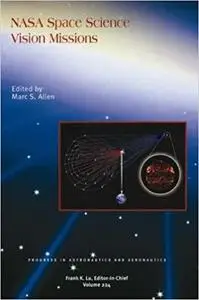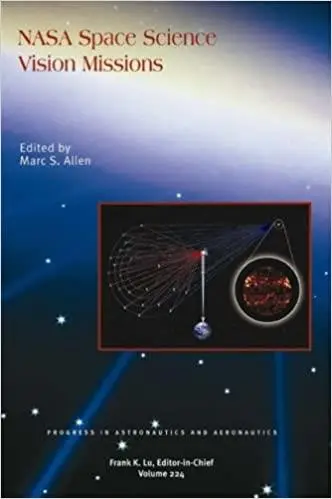NASA Space Science Vision Missions by Marc Allen
English | March 15, 2008 | ISBN: 1563479346 | 260 pages | PDF | 5.49 Mb
In order to extend analyzes of the scientific objectives, system design, and operations of potential future space science missions, and to identify precursor technology requirements, NASA has funded studies for a variety of advanced missionsóthe Space Science Vision Missions. The investigator teams have completed their formal final reports for these studies. The teams were invited to develop shorter, summary versions of these final Vision Mission reports suitable for a broader audience. This book, published in partnership with NASA, is the culmination of that effort. Each of the reports sketches out a revolutionary mission concept, providing information on its science rationale, architecture and implementation approach, technology challenges, and deployment and operations. A final chapter describes an analysis of directions for future technology development inspired by this portfolio of mission concepts.
- Solar Polar Imager: Observing Solar Activity from a New Perspective–Using a solar sail, the Solar Polar Imager mission will observe the Sun from a polar orbit to observe magnetic fields and convective flows in the polar regions as well as coronal mass ejections and the Sunís outer atmosphere in order to better understand the solar dynamo and solar activity.
- Titan Explorer: Next Step in the Exploration of a Mysterious World–The Titan Explorer mission includes an orbiter with remote sensing instruments and an airship platform to investigate the atmosphere, clouds, haze, and surface of Saturn's moon Titan.
- Neptune Orbiter with Probes: Flagship Mission to the Neptune System–The Neptune Orbiter with Probes mission will use aerocapture to explore Neptuneís rings and magnetosphere, which serve as an analog for the primordial solar nebula and accretion disks around other stars, and its satellite Triton, which resembles small objects at the outer boundary of our solar system today.
- Neptune Orbiter, Probe, and Triton Lander–The Neptune Orbiter, Probe, and Lander mission will use nuclear electric propulsion to investigate Neptune and orbit its satellite, Triton.
- Leaving the Heliosphere: A Nuclear-Powered Interstellar Probe–The Interstellar Probe will leave the heliosphere to explore interstellar space, learning about its composition and dynamics and its interaction with our solar system.
- The Stellar Imager: A UV-Optical Interferometer in Space–Observing distant stars with ultra-high resolution, the Stellar Imager mission will reveal their magnetic activity and internal structure, helping us understand solar activity and magnetohydrodynamics throughout the Universe.
- The Modern Universe Space Telescope–By bringing our understanding of other galaxies nearly up to our understanding of our own, the Modern Universe Space Telescope will illuminate how the chemical elements are created and dispersed, how normal galaxies form and evolve, and how stars and planetary systems form.
- Generation X: A Large Area and High Resolution X-ray Observatory to Study the Early Universe–The Generation-X mission will detect the first black holes formed when the Universe was only a few hundred million years old.
- The Advanced Compton Telescope is a wide-field gamma-ray spectrometer designed to uncover how supernovae and other stellar explosions create the chemical elements through an all-sky survey of nuclear line emissions.
- Feel Free to contact me for book requests, informations or feedbacks.
Without You And Your Support We Can’t Continue
Thanks For Buying Premium From My Links For Support



